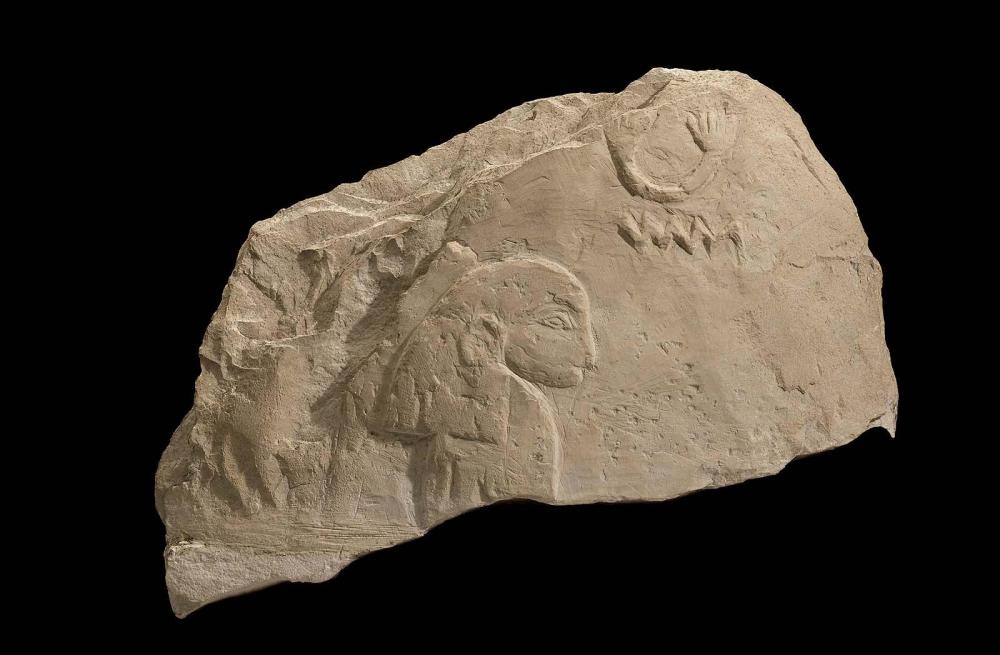Advanced Search 

Stele of a woman
Egyptian
Early Dynastic Period, Dynasty 1, reign of Djer
2926–2880 B.C.
Findspot: Egypt, Abydos, Tomb of Djer
Medium/Technique
Limestone
Dimensions
Height x length x depth: 21 x 31 x 7.5 cm (8 1/4 x 12 3/16 x 2 15/16 in.)
Credit Line
Egypt Exploration Fund by subscription
Accession Number01.7294
CollectionsAncient Egypt, Nubia and the Near East
ClassificationsArchitectural elements – Stele
The First Dynasty royal funerary monuments at Abydos were surrounded by hundreds of subsidiary burials belonging to members of the kings' households, who were apparently killed to accompany the ruler to the afterlife. The practice apparently lasted for only a short time during the Early Dynastic Period. A round-topped stele marked each grave. This fragmentary example comes from the burial of a woman who was interred alongside the tomb of king Djer.
DescriptionThe First Dynasty royal tombs and funerary enclosures at Abydos are surrounded by hundreds of subsidiary burials, some richly furnished, belonging to members of the rulers' households. Because the burials appear to have taken place at the same time the king was interred, and because so many of the deceased appear to have been quite young, excavators concluded that royal retainers, officials, and others had been killed to accompany the ruler into the afterlife. This practice is believed to have occurred at other Early Dynastic royal cemeteries as well, but it appears to have been followed for only a short time. It is attested nowhere after the end of Dynasty 1.
Each of the subsidiary graves at Abydos, like the tombs of the kings, was marked by a round-topped stela. While the royal tombs featured large stelae of hard stone with sharply carved decoration in raised relief, those of the retainers are small and generally made of crudely carved limestone. This fragmentary example comes from the grave of a woman who was buried alongside the tomb of King Djer. Its raised relief is largely devoid of contour and the surface is uneven. Although much has been broken away, the missing lower portion can be reconstructed based upon other known examples. The figure, shown kneeling and facing to the right, without visible arms, is not intended to be a portrait of any specific woman, but is instead merely a symbol for a female. Later, the same hieroglyphic sign would serve as a determinative for female personal names. The inscription, "the ka of . . . " may be an abbreviated request for funerary offerings with the name itself omitted. Alternatively, it might be the deceased woman's name.
Each of the subsidiary graves at Abydos, like the tombs of the kings, was marked by a round-topped stela. While the royal tombs featured large stelae of hard stone with sharply carved decoration in raised relief, those of the retainers are small and generally made of crudely carved limestone. This fragmentary example comes from the grave of a woman who was buried alongside the tomb of King Djer. Its raised relief is largely devoid of contour and the surface is uneven. Although much has been broken away, the missing lower portion can be reconstructed based upon other known examples. The figure, shown kneeling and facing to the right, without visible arms, is not intended to be a portrait of any specific woman, but is instead merely a symbol for a female. Later, the same hieroglyphic sign would serve as a determinative for female personal names. The inscription, "the ka of . . . " may be an abbreviated request for funerary offerings with the name itself omitted. Alternatively, it might be the deceased woman's name.
ProvenanceFrom Abydos, tomb of Djer. 1901: excavated by William Matthew Flinders Petrie for the Egypt Exploration Fund, assigned to the Egypt Exploration Fund in the division of finds by the government of Egypt, received by the MFA through subscription to the Egypt Exploration Fund. (Accession Date: August 1, 1901)
